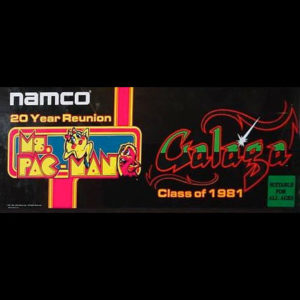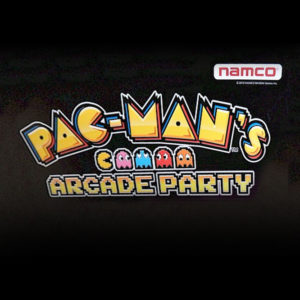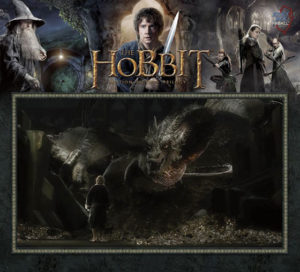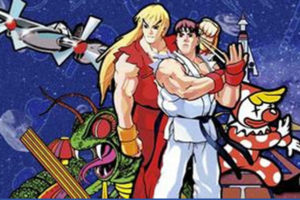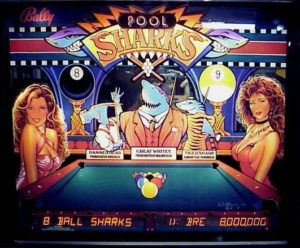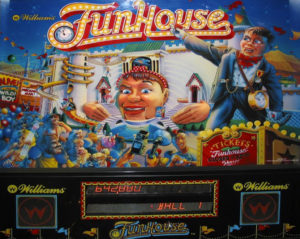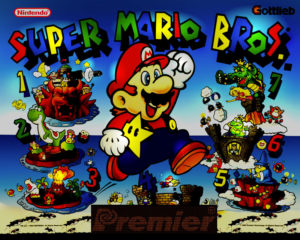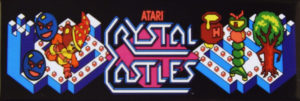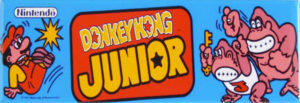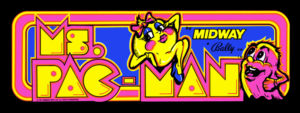-
•27” HD LCD Display featuring full color custom animation, movie clips, scoring, attract mode, back glass artwork and more.. •Standard stainless steel spring-loaded metal lockdown bar and side armor •RGB-LED Playfield Lighting •Super-White LED GI Lighting •Full color digitally printed cabinet and back box artwork •7 Speaker 2.1 Digital Audio system. •Each game will have a number affixed to the game apron to be seen under the playfield glass… •Premium Clear Coated PlayfieldThis one or two player upright video game is not just one dedicated game like Pac-Man or Missle Command. Through the use of modules or packs installed in the machine, more games could be added to its itinerary of playable classics. Early video games had full circuit boards within the machine as well as dedicated transformers and controls. Nowadays, emulators have taken over the arcade and home markets, allowing thousands of games in the footprint of one machine. Pinball machines have also been emulated in this formats. These games are finding themselves more and more in the home market for obvious reasons: you can have 100 of your favorite machines to come home to in one solo unit–and you own the keys!This unique game has the distinction of having the first mechanical head on a pinball machine. His name is Rudy, and he not only follows the ball during play with his eyes but harasses you with a flurry of comments as the game proceeds. This game was designed by Pat Lawlor and Larry Demar with art accolades going to John Youssi. 10,750 games were made. The object of the game is to advance the clock to midnight. This makes Rudy fall asleep. If you’re skillful enough to shoot the ball into Rudy’s mouth, he wakes up, spits the ball out, and your next goal is to shoot the ball into the trap door for a jackpot. The mystery mirror contains different objectives to achieve. Completing the mirror awards “super frenzy” where all contacts award higher points. Another unique feature of the game is the left plunger, which shoots the “steps” when activated for various awards. The best part of the game is Rudy, though. He taunts you through the whole game.The player controls Mario throughout the Mushroom Kingdom. Mario’s abilities can be changed by picking up certain items; for example, Mario is able to shoot fireballs if he picks up a Fire Flower. The player takes on the role of the main protagonist of the series, Mario. Mario’s slightly younger brother, Luigi, is only playable by the second player in the game’s multiplayer mode, and assumes the same plot role as Mario. The objective is to race through the Mushroom Kingdom, survive the main antagonist Bowser?s forces and save Princess Toadstool. The player moves from the left side of the screen to the right side in order to reach the flag pole at the end of each level. A prevalent rumor that it is possible to jump over the flag pole was later confirmed by GameTrailers. The game world has coins scattered around it for Mario to collect, and special bricks marked with a question mark (“?”), which when hit from below by Mario, may reveal more coins or a special item. Other “secret” (often invisible) bricks may contain more coins or rare items. If the player gains a red and yellow Super Mushroom, Mario grows to double his size and can take one extra hit from most enemies and obstacles, in addition to being able to break bricks above him. Players are given a certain number of lives (and may gain additional lives by picking up green and orange ‘1-Up’ mushrooms, collecting 100 coins, or defeating several enemies in a row with a Koopa shell), which are lost when Mario takes too much damage, falls in a pit, or runs out of time; the game ends when all lives are lost. Mario’s primary attack is jumping on top of enemies, though many enemies have differing responses to this. For example, a Goomba will flatten and be defeated, while a Koopa Troopa will temporarily retract into its shell, allowing Mario to use it as a projectile. These shells may be deflected off a wall to destroy other enemies, though they can also bounce back against Mario, which will hurt or kill him. An alternate way to damage enemies is with the Fire Flower, an item which, when picked up, changes the color of Mario’s outfit (or only increases his size if a red and yellow mushroom had not been used previously) and allows him to shoot fireballs. A less common item is the Starman, which often appears from concealed or otherwise invisible blocks. This makes Mario temporarily invincible to most hazards and capable of defeating enemies on contact. The game consists of eight worlds with four sub-levels called “stages” in each world. The final stage of each world takes place in a castle where Bowser or one of his decoys are fought. The game also includes some stages taking place underwater, which contain different enemies. In addition, there are bonuses and secret areas in the game. Most secret areas contain more coins for Mario to collect, but others may contain “warp pipes” which allow Mario to advance to later worlds in the game, skipping over earlier ones.Crystal Castles has nine levels with four castles each, and a tenth level which features a single castle — the clearing of which ends the game. Each of the 37 trimetric-projected castles consists of a maze of hallways filled with gems and bonus objects, and also includes stairs, elevators and tunnels that the player can use as shortcuts. The three-letter initials of the player with the highest score are used to form the first level’s castle structure. When all gems in a castle have been collected, the player moves on to the next castle. The player can also skip some castles and acquire additional lives and points by using secret warps activated by making Bentley Bear jump at special locations. A trackball and “jump” button are used for controlling Bentley Bear’s motions. Gems are collected by simply walking over them, and a bonus is given upon collection of the last gem. While collecting gems, there are a number of enemies that try to stop Bentley and/or collect the gems for themselves. With two exceptions, if touched by the enemies he will lose one of his lives. Any gems collected by the enemies also result in a lower obtainable score for that screen. Likewise, if the last available gem is collected by the enemy, the player also loses the last gem bonus. Enemies can be avoided by use of the maze and its constructs, or by making Bentley jump over opponents with the jump button, in some cases also allowing him to stun them. Some types of enemies will track Bentley’s movements in certain ways, while others move at random. If Bentley is touched, he “cries out” in a distinctive manner with the use of a cartoonish word balloons. If 3 or more lives remain, he says “BYE!”; if 2 lives still remain, the quotation is “OH NO!”; if 1 life is left, it is “OUCH!”; and finally, for the last lost life (which ends the game), he says “#?!”, so as to imitate an obscenity. At the beginning of every maze, gems are worth 1 point each; this value increases by 1 for every gem Bentley picks up, to a maximum of 99. Each maze also randomly includes a hat or honey pot, which serve the dual purpose of awarding points and providing Bentley with the ability to defeat specific enemies. The hat is worth 500 points and will make Bentley invulnerable for a few seconds and allow him to eliminate Berthilda the witch, who appears in the last maze of each level. The honey pot is worth 1,000 points, and picking it up can delay the landing of a swarm of bees. Other villains present in the game include: “Nasty Trees” which become more ornery as levels progress, a ghost that will usually appear in the Hidden Spiral levels, dancing skeletons, “Gem Eaters” who Bentley Bear can defeat if he catches them while eating a gem, and also the devilish “Crystal Balls” creatures that in later levels tend to follow Bentley Bear persistently as he collects gems. The Nasty Trees and Crystal Balls can also pick up gems. Crystal Castles contains two notable easter eggs. Jumping 100 times or more in the southeast corner of level 1?1 and clearing the maze of all gems will make ATARI appear on level 1?2.[2] On level 5?4, if the player kills Berthilda and goes to the corner of the area where she was and jumps, “FXL” will appear in the southeast corner of the screen. These are the initials for Franz X. Lanzinger, a designer of Crystal Castles.Gameplay of Pole Position. In this game, the player controls a Formula One race car, and has to complete a time trial lap within a certain amount of time (between 90 and 120 seconds) to qualify for an F1 race at the Fuji Racetrack. After qualifying, the player races against seven other CPU-controlled cars in a championship race (but if he or she does not qualify, the car will stay on the track until the timer runs out). The player must also avoid going off the road so that he or she will not crash into the billboards. Pole Position was the first racing video game to feature a track based on a real racing circuit. It was also the first game to feature a qualifying lap, requiring the player to complete a time trial before they can compete in Grand Prix races. Once the player has qualified, they must complete the race in the time allowed, avoiding collisions with CPU-controlled opponents and billboards along the sides of the track. The game’s publisher Atari publicized the game for its “unbelievable driving realism” in providing a Formula 1 experience behind a racing wheel. The game’s graphics featured full-color landscapes with scaling sprites, including race cars and other signs, and a pseudo-3D, third-person, rear perspective view of the track, with its vanishing point swaying side to side as the player approaches corners, accurately simulating forward movement into the distance.Similar to Centipede, the object of the game is to destroy a millipede that advances downward from the top of the screen. The millipede travels horizontally until it either hits an obstacle or reaches the edge of the screen, after which it drops one row and reverses direction. Once it enters the player’s gray maneuvering area, it stays there and extra heads appear at intervals until both they and the millipede are destroyed. Shooting a body segment splits the millipede in two, with the rear portion sprouting its own head. A collision with any enemy costs the player one life. New enemies and gameplay elements are introduced in Millipede: Earwig: same as the scorpion in Centipede, making mushrooms poisonous so that the millipede will charge straight to the bottom of the screen after touching them. Bee: same as the flea in Centipede, dropping mushrooms in a vertical line and requiring two shots to kill. Spider: same behavior as in Centipede, bouncing irregularly across the player area and eating mushrooms. Multiple spiders can appear at the same time on higher levels. Inchworm: when hit, slows all enemies for a short period of time. Beetle: crawls around the player area for a while, then climbs up and leaves the screen, turning any mushrooms it touches into indestructible flowers. When hit, everything on the screen scrolls down one row. Dragonfly: drops mushrooms while zigzagging down, and can be destroyed with a single shot. Mosquito: bounces off the sides of the screen as it descends diagonally. When hit, everything on the screen scrolls up one row. DDT bomb (stationary): can be blown up with one shot, destroying all enemies and mushrooms within the blast radius. Whenever the mushrooms scroll down, a new bomb is added at the top of the screen. Up to four bombs can be in play at one time. The player scores points for shooting the bomb itself, as well as increased values for any enemies destroyed in the blast. All flowers and poisoned/partially destroyed mushrooms revert to normal, whole mushrooms and score points during the process when the player loses a life. At regular intervals during the game, the player will face a swarm of enemies (bees, dragonflies, etc.) instead of the usual millipede. Each enemy destroyed awards increasing points, up to a maximum of 1,000 points per enemy; this attack ends when either the entire swarm has passed or the player loses a life. Also, at intervals new mushrooms will grow on the field while others die off, in a pattern similar to Conway’s Game of Life. Players can also choose at the start of the game whether to play at an advanced level, starting with a score that is a multiple of the number of points needed to earn an extra life (by default, 15,000). The gameplay is generally much more advanced than it would be had the player started with a score of 0 and worked their way up to that point level. The maximum advanced level allowed is a function of the preceding player’s score, and games started at an advanced level where the player did not earn at least one extra life are not eligible for the high scoreboard.Donkey Kong Jr. is a 1982 arcade-style platform video game by Nintendo. It first appeared in arcades, and, over the course of the 1980s, was later released for a variety of platforms, most notably the Nintendo Entertainment System. The game’s title is written out as Donkey Kong Junior in the North American arcade version and various ports to non-Nintendo systems. Its eponymous star, Donkey Kong Jr., also called simply Junior[3] or abbreviated as DK Jr.,[4] is trying to rescue his father Donkey Kong, who has been imprisoned. Donkey Kong’s cage is guarded by Mario, in his only appearance as an antagonist in a video game. This game is the sequel to the video game Donkey Kong, which featured Mario as the hero and Junior’s father as the villain. Plot: Mario (known as Jumpman in Donkey Kong) has captured Donkey Kong and placed him in a cage as punishment for kidnapping his girlfriend Pauline.[5] Donkey Kong Jr. must rescue his father from Mario by working his way through a series of stages. Mario attempts to stop DK Jr. by releasing animals and putting obstacles in his way. When DK Jr. succeeds at the final level, Donkey Kong is freed and kicks Mario into the distance, leaving him to an unknown fate. Gameplay Like its predecessor, Donkey Kong, Jr. is an arcade-style platform game. There are a total of four stages, each with a unique theme. DK Jr. can run left and right, jump, and grab vines/chains/ropes to climb higher on the screen. He can slide down faster by holding only one vine, or climb faster by holding two. Enemies include “Snapjaws,” which resemble bear traps with eyes, bird-like creatures called “Nitpickers”, and “Sparks” that roam across the wiring in one of Mario’s hideouts. To pass the first three stages, DK Jr. must reach the key at the top. In the fourth stage, DK Jr. must push six keys into locks near the top of the stage to free Donkey Kong. After a brief cutscene, the player is taken back to the first stage at an increased difficulty. DK Jr. loses a life when he touches any enemy or projectile, falls too great a distance, or falls off the bottom of the screen. Additionally, he loses a life if the timer counts down to zero. The game ends when the player loses all of his or her lives.In this, the first proper sequel to Namco’s legendary pill-eating maze game, players must once again run around a number of mazes, eating all of the pills that are scattered throughout. The ever-present ghosts (Blinky, Pinky, Inky and Sue) return to hamper the player’s progress. The infamous “power pills” are also present and correct, with four appearing in each maze. Namco introduced a number of changes and enhancements over the original game. The first difference is in the main character. For the first time in video-game history, the game’s lead character was female. Ms. Pac-man is almost identical to the original character with two main differences: she wears a bow in her “hair” and is also wearing lipstick. Another change from the original is that the bonus fruit items are no longer static but now move randomly around the mazes. Ms. Pac-man features four different maze layouts, which alternate every two to four screens: the first maze is only encountered in rounds 1 and 2 and has 220 dots and four power pills. There are two sets of tunnels in this maze equidistant from the center of the maze. You must clear this maze twice before moving on to the next maze. The second maze is only encountered in rounds 3, 4, and 5, and has 240 dots and four power pills. There are two sets of tunnels in this maze: one set in the lower half, and the other set at the very top. You must clear this maze three times before moving on to the next maze. The third maze is first encountered in round 6 and has 238 dots and four power pills. Unlike all other mazes, there is only one set of tunnels in this maze, slightly above the center of the board. You must clear this maze four times before moving on to the next maze. The fourth and final unique maze is first encountered in round 10 and has 234 dots and four power pills. There are two sets of tunnels in this maze, directly next to one another in the middle of the maze. The turns at the entrance to the tunnels change the usual immediate accessibility of the tunnels and should be taken into account. You must clear this maze four times before moving on to the next maze.



